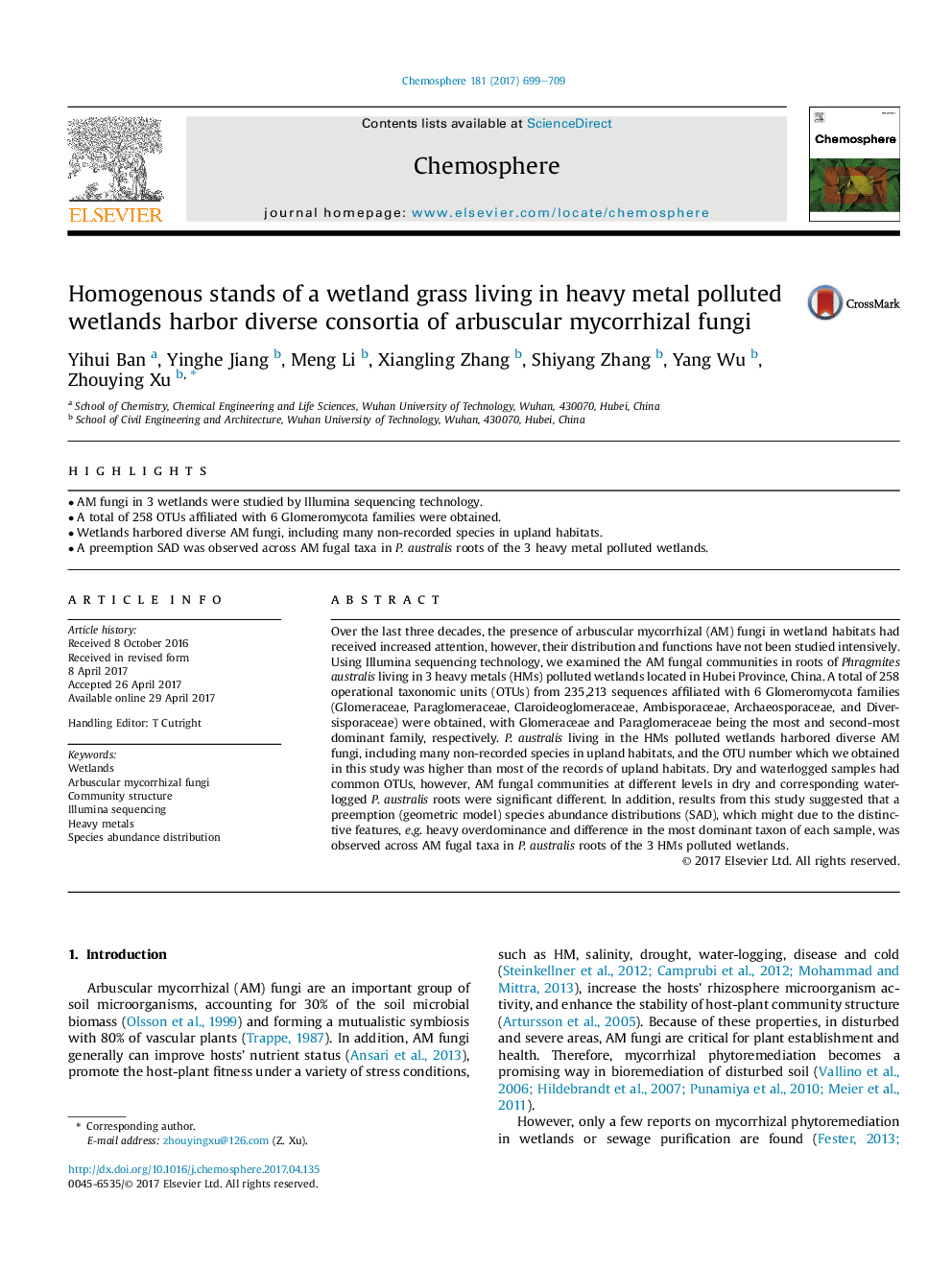| Article ID | Journal | Published Year | Pages | File Type |
|---|---|---|---|---|
| 5747204 | Chemosphere | 2017 | 11 Pages |
Abstract
Over the last three decades, the presence of arbuscular mycorrhizal (AM) fungi in wetland habitats had received increased attention, however, their distribution and functions have not been studied intensively. Using Illumina sequencing technology, we examined the AM fungal communities in roots of Phragmites australis living in 3 heavy metals (HMs) polluted wetlands located in Hubei Province, China. A total of 258 operational taxonomic units (OTUs) from 235,213 sequences affiliated with 6 Glomeromycota families (Glomeraceae, Paraglomeraceae, Claroideoglomeraceae, Ambisporaceae, Archaeosporaceae, and Diversisporaceae) were obtained, with Glomeraceae and Paraglomeraceae being the most and second-most dominant family, respectively. P. australis living in the HMs polluted wetlands harbored diverse AM fungi, including many non-recorded species in upland habitats, and the OTU number which we obtained in this study was higher than most of the records of upland habitats. Dry and waterlogged samples had common OTUs, however, AM fungal communities at different levels in dry and corresponding waterlogged P. australis roots were significant different. In addition, results from this study suggested that a preemption (geometric model) species abundance distributions (SAD), which might due to the distinctive features, e.g. heavy overdominance and difference in the most dominant taxon of each sample, was observed across AM fugal taxa in P. australis roots of the 3 HMs polluted wetlands.
Keywords
Related Topics
Life Sciences
Environmental Science
Environmental Chemistry
Authors
Yihui Ban, Yinghe Jiang, Meng Li, Xiangling Zhang, Shiyang Zhang, Yang Wu, Zhouying Xu,
